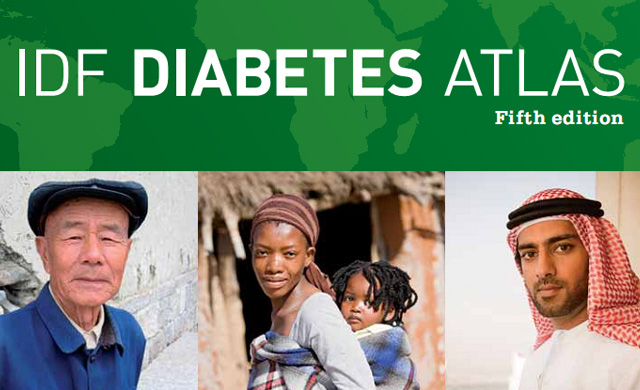World Diabetes Atlas – 5th Edition
Tuesday, December 6, 2011 As regular readers will recall, this week I am attending the World Diabetes Congress – with well over 14,000 attendees, the largest ever world congress on this issue.
As regular readers will recall, this week I am attending the World Diabetes Congress – with well over 14,000 attendees, the largest ever world congress on this issue.
For readers, who are not familiar with the International Diabetes Federation (!DF), it may be worth pointing out that the IDF is an umbrella organization of over 200 national diabetes associations in over 160 countries. IDF’s national diabetes associations are divided into the following regions: Africa (AFR),Europe (EUR),Middle East and North Africa (MENA), North America and Caribbean (NAC),South and Central America (SACA), South East Asia (SEA) and Western Pacific (WP).
Thus, the IDF, which has been in operation since 1950, represents the interests of the growing number of people with diabetes and those at risk.
The mission of IDF is to:
“advance diabetes care, prevention and a cure worldwide.”
Its strategic goals are to:
- Drive change at all levels, from local to global, to prevent diabetes and increase access to essential medicines.
- Develop and encourage best practice in diabetes policy, management and education.
- Advance diabetes treatment, prevention and cure through scientific research.
- Advance and protect the rights of people with diabetes, and combat discrimination.
(interestingly, these goals are reminiscent of those of the Canadian Obesity Network, Canada’s National Obesity organization, with the difference perhaps that obesity is a much larger issue than just diabetes).
Amongst the many activities and resources provided by the IDF, one that readers may find of particular interest (and one that can be a great time waster for readers who are looking for new ways to procrastinate) is the interactive World Diabetes Atlas, now in its 5th edition (just released last month).
The atlas exemplifies just how many folks around the work (especially in South Asia) are affected by type 2 diabetes – interesting, an obesity map of the world would look almost identical, except that the numbers would be far greater (only about 15-20% of obese people actually go on to develop diabetes – but may well have other weight-related health problems).
One of the notable features of this congress is the massive industry exhibit – not quite as extensive as those at cardiology or oncology meetings but, by a significant magnitude of scale, larger than any industry exhibits seen at obesity meetings. This is of course because diabetes management (although never curative) is big business, with countless new classes of anti-diabetic drugs in the pharma pipelines to add to the many oral and injectable treatments that are already out there (not to mention the vast blood glucose monitoring and insulin pump industries).
While there is no doubt that these companies are providing excellent products and services that make the life of people with diabetes so much easier and help reduce the horrible risks of this condition, one can only wish that in the not too distant future, a similar arsenal of treatments and management tools may become available for those struggling with obesity and its myriad sequelae (EOSS 2-4).
While the hope is not to ‘cure’ obesity (I am not sure we can actually do that), having effective obesity treatments that fill the vast therapeutic gap between ‘eat-less-move-more’ and bariatric surgery are urgently needed.
Not only would this reduce the global burden of diabetes but hopefully also the global burden of the over 20 other chronic conditions that are strongly associated with excess weight (including many cancers).
Unfortunately, neither the current regulatory framework for new launching new obesity medications nor the necessary investment into training health professionals to better manage obesity or into research to find better treatments comes close to the actual size of the problem (just count how many Canadian medical schools actually have a chair in obesity – I know of two).
So although there is an appreciable number of talks and sessions on obesity (including the ones the I am giving and chairing), the focus of this congress is of course on managing diabetes and its complications.
Unfortunately, as I have said before, managing type 2 diabetes without addressing obesity is largely ‘palliative’ care.
Obviously, not a popular view at this conference.
AMS,
Dubai, UAE


